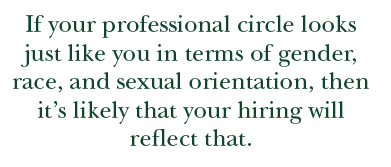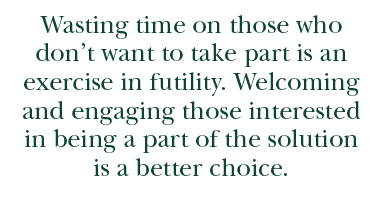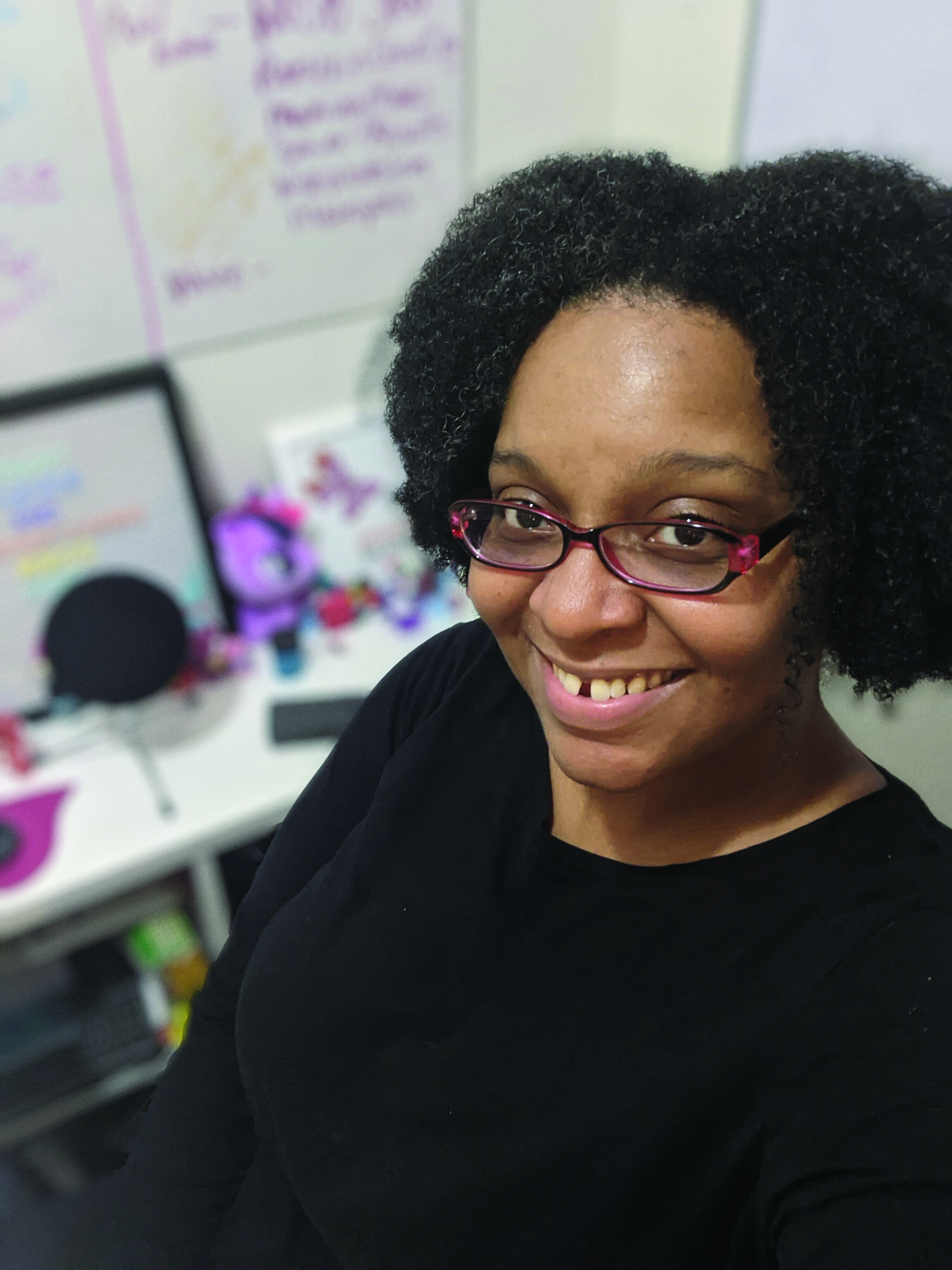By Shawneda Crout | STC Member
The workforce in America has been diverse since the first slave ship landed in Virginia; building equity and inclusion within our diverse population has required more of a conscious effort. Descendants of African slaves have been employed in lower-level jobs for less pay, with little to no opportunity for advancement, and treated poorly since the abolishment of slavery.
Slavery was an intentional choice made for economic advancement built on the intentional dehumanization of the enslaved. Journals, diaries, and slave logs show the mindset of many who felt the need to explain that their ownership of “others” who were darker were inferior, in order to excuse themselves. These lies led to the dehumanization and demoralization of the slaves. Introducing these ideologies into the fabric of American culture during its formative years has made the treatment of those of African descent as “less than”—a perception that has been acceptable or encouraged since our arrival in Virginia. Ripping this thread from our construction must be done with precision, delicacy, and intention. But it can be done.
Making a Conscious Effort
Journals, diaries, and logs of abolitionists show that the work of abolishing slavery began the same day the first slave ship landed in Virginia. Someone of European descent was appalled by the thought of making people of African descent work without pay to create economic gain. Hundreds of research papers have been written, countless conspiracy theories birthed and debunked, and a few theories proven. Slave owners with a crisis of conscience, trapped between building a legacy of wealth and the recognition of their slaves, might set them free upon death. The unintentional consequences of the evils inherent in building wealth using slave labor in America have spread from complicating the relationship between descendants of slave owners and descendants of African slaves to the way descendants of African slaves in America are viewed by all ethnicities.
Eradicating the devaluation, discrimination, and pervasive negative attitudes toward descendants of African slaves will not be easy. Legislation and political action with consistent consequences is one small part of the solution. That legislation will be led by the adoption of different behaviors and attitudes by individuals. This pattern is demonstrated in the legislative improvements that have been enacted to reverse other “isms” in American society. Reversing the negative impact of slavery on every American citizen will require an intentional plan with specific, measurable actions, with fiduciary goals tied to positive results. Tying the benefits of acting with intention to reverse systemic racism in America has to be tied to financial gain for any modicum of acceptance, widespread participation, and hope for success.
Resolving the problem of discrimination, representation, inclusion, and equity won’t happen as a natural process of selection. CNBC reports that up to 80 percent of positions are filled through networking—the circle of people that you know and recommend. If your professional circle looks just like you in terms of gender, race, and sexual orientation, then it’s likely that your hiring will reflect that.
Inclusion by Intent
Everyone involved in being a part of making the goal of inclusion and equity must be intentional. We must be intentional about being honest with ourselves, about how we can take part and why. Anti-racists and allies must be consistently intentional about deciding to take the small, uncomfortable steps toward changing environments, so the once-accepted behaviors are no longer accepted.
 African Americans must work with those engaged for more than ethical motivations. We must be able to recognize when we’ve exhausted our capacities and need to address the consequences of living in this environment. When necessary, we must be intentional about seeking professional help to work through the emotional pain so we can continue to be a productive part of the solution.
African Americans must work with those engaged for more than ethical motivations. We must be able to recognize when we’ve exhausted our capacities and need to address the consequences of living in this environment. When necessary, we must be intentional about seeking professional help to work through the emotional pain so we can continue to be a productive part of the solution.
Simultaneous engagement of those driven by profit, open to change, and already doing DEI work will be the most successful way forward. Focusing on the tangible benefits will be necessary to accomplish inclusion and equity that benefits the descendants of African slaves as much as it has benefited women of European descent and other ethnicities with more representation in executive management in technical communications and all of corporate America. Long-term, intentional personal and professional action by anti-racists, allies, and people of African descent with the ability to effect change is another part of the equation being formulated.
 Overcoming Negative Stereotypes
Overcoming Negative Stereotypes
Stereotypes go both ways. Negative stereotypes about those of African descent like laziness, stupidity, and a biological bend toward depravity originated from slavery—stereotypes that have continued to be perpetuated to this day, in certain sections of American society. Ironically, these same negative stereotypes have been expressed by the descendants of African slaves about the slave owners and their descendants with an additional belief their greed makes them inherently evil. Owning slaves to do work for them to become richer made them—not the slave—lazy. Believing a person they owned would ever stop wanting to be free made them stupid. Is anything more depraved than treating humans like stock, driving them with whips to work, breeding them like horses to increase productivity, or worse—making money by selling their children?
Some American citizens will never acknowledge the impact of what happened. The reasons for not wanting to do so are as varied as the cultures, ethnicities, and ideologies now present in America and our workforce.
Being an Ally
Inclusivity and equity are achievable by deciding to consistently refute inherent bias built into American society. For anti-racists and allies, this can be as simple as questioning the validity of statements that are built on the acceptable dehumanization practices called “microaggressions” and incessant diminishing of descendants of African slaves. The following is an example of how to do this in an everyday setting on a social media platform like LinkedIn.
An interesting article about eliminating “unconscious bias” catches your eye on LinkedIn. You’re thinking about clicking on the link to read it and notice a comment. The comment says, “This is reverse discrimination. I shouldn’t be forced to hire someone who isn’t qualified.” Responding to this comment in a professional, intentional way that exposes how it reinforces inherent and unconscious bias that has been tolerated at best and adopted at worst questions the validity of the statement. An anti-racist would point out the bias and racist undertone of the comment by saying something like this: “You can’t be forced to hire anyone. Why do you assume if you hire someone that isn’t white and male they aren’t qualified?” An ally who isn’t comfortable addressing racism head on can use a reverse passive microaggression. “You shouldn’t. No one should be forced to hire someone unqualified. More importantly, no one should have to work for someone unable to see them as capable of contributing positively to the company.”
To successfully remove the thread of systemic racism and diminished valuation of the descendants of African slaves from the fabric of our country, we need as many people on board as possible. The Spectrum of Allies tool is one example of how to shift the focus. We often think of social change as having two camps: those who seek change, and those who don’t. The reality is more nuanced. The majority of individuals fall into a middle ground. As we see in the figure below, our goal as active allies is not to move the active opposition across the full spectrum, but rather to move each group one step towards allyship to achieve critical mass for change.
Wasting time on those who don’t want to take part is an exercise in futility. Welcoming and engaging those interested in being a part of the solution is a better choice. Each person interested in being part of the solution, regardless of ancestry, must first acknowledge their own unconscious biases. Hiring managers, business owners, practitioners, and technical communicators must be intentional about not buying into the negative stereotypes inherited by the descendants of slaves of African descent, slave owners, or those who have assimilated into American culture. This is the first step.
 What’s in It for Me?
What’s in It for Me?
The average person is more likely to get involved when things benefit them and those they care about on a personal level. Anti-racists and allies care about improving the fabric of American society, but a great deal more people aren’t racist and also won’t change their behavior unless it benefits them. Persuading someone who is indifferent to how the descendants of African slaves have been dealing with the negative daily impact of systemic racism and accepted diminished valuation for centuries to care could take several centuries. Instead, we need to frame the discussion within themes that resonate for them.
For some people, financial independence and profit are most important. Being intentional about realizing the negative daily impact of systemic racism on all Americans and how much it costs America financially must be the start and finish of the conversation. Persuading someone indifferent to help to change the narrative about racism in America to get involved because it will benefit everyone will be easier and has a likelier chance of success based on human behavior. Disheartening as this may be initially by those intrinsically invested in making this happen, embracing the truth helps each person dedicated to achieving inclusion and equity move forward toward the goal.
“The case for establishing a truly diverse workforce, at all organizational levels, grows more compelling each year,” explains Vijay Eswaran, Executive Chairman of the QI Group of Companies in an article for the World Economic Forum. “The moral argument is weighty enough, but the financial impact—as proven by multiple studies—makes this a no-brainer.”
Each person living in America has been shaped by the messaging we received. Our belief systems are built by inherence, inference, and direct instruction. The environment where we’re parented and educated, and our individual personalities inform how we respond to the information we receive. As descendants of African slaves in America, unless our melanin content and hair make passing as something else possible, we can’t escape the direct impact of systemic racism. We don’t have the collective ability to end the current culture that presents dehumanizing and demoralizing representation of African Americans while choosing not to show the same images of other ethnicities, but we can choose how we respond. African Americans who descended from slaves who choose to take part in the slow, methodical dismantling of systemic racism must be intentional about rejecting the dehumanizing and demoralizing stereotypes we’ve been taught, to recognize the efforts of anti-racists and allies. We must extend the same grace and understanding for those trying to navigate the murky waters of unity that we hope to receive when the fabric of our country is healed. We have to understand the right to choose to take part to course correct our economy by those motivated by personal benefit without taking it as a personal attack or internalizing it as diminished valuation.
Hope for the Future
There is hope for an intentional, inclusive future. Three-quarters of respondents in the Deloitte Millennial Survey believe that organizations are more innovative when they foster a culture of inclusion. As this group ascends to more management roles, there is hope that their hiring practices will reflect increasing racial equity and inclusion.
No one culture or ethnicity will resolve the problem of equity and inclusion in technical communications or corporate America. Everyone who wants to be a part of the solution must be honest with themselves about their motivation, capacity, and intention to work together for as long as it takes to make it happen.

SHAWNEDA CROUT (sc@shawneda.com) is a self-employed technical communicator. Crout has launched social media communications programs across multiple industries ranging from a family-owned crane and hoist manufacturer to a faith-based nonprofit. Her passion for words grew from publishing fiction novels to earning a Master of Arts in English, Technical Communication where she was introduced to STC as a student member. When she’s not creating solutions where technical communication merges with marketing, you can find her doing low impact exercises with her daughter or publishing her books.
REFERENCES
Bowman, Dannielle & Bailey, Anne C. n.d. “The 1619 Project.” The New York Times Magazine. Accessed 7 April 2021.
https://www.nytimes.com/interactive/2019/08/14/magazine/1619-america-slavery.html.
Deloitte. 2020. The Deloitte Global Millennial Survey 2020. Accessed 7 April 2021. https://www2.deloitte.com/global/en/pages/about-deloitte/articles/millennialsurvey.html.
Eswaran, Vijay. 2019. “The Business Case for Diversity in the Workplace is Now Overwhelming.” World Economic Forum. Accessed 7 April 2021. https://www.weforum.org/agenda/2019/04/business-case-for-diversity-in-the-workplace/
Freeland Fisher, Julia. 2019. “How to Get a Job Often Comes Down to One Elite Personal Asset, and Many People Still Don’t Realize It.” CNBC. Accessed 7 April 2021. https://www.cnbc.com/2019/12/27/how-to-get-a-job-often-comes-down-to-one-elite-personal-asset.html.
Trainings. n.d. “Spectrum of Allies.” Accessed 7 April 2021. https://trainings.350.org/wp-content/uploads/2015/11/spectrumofallies-1.png.


